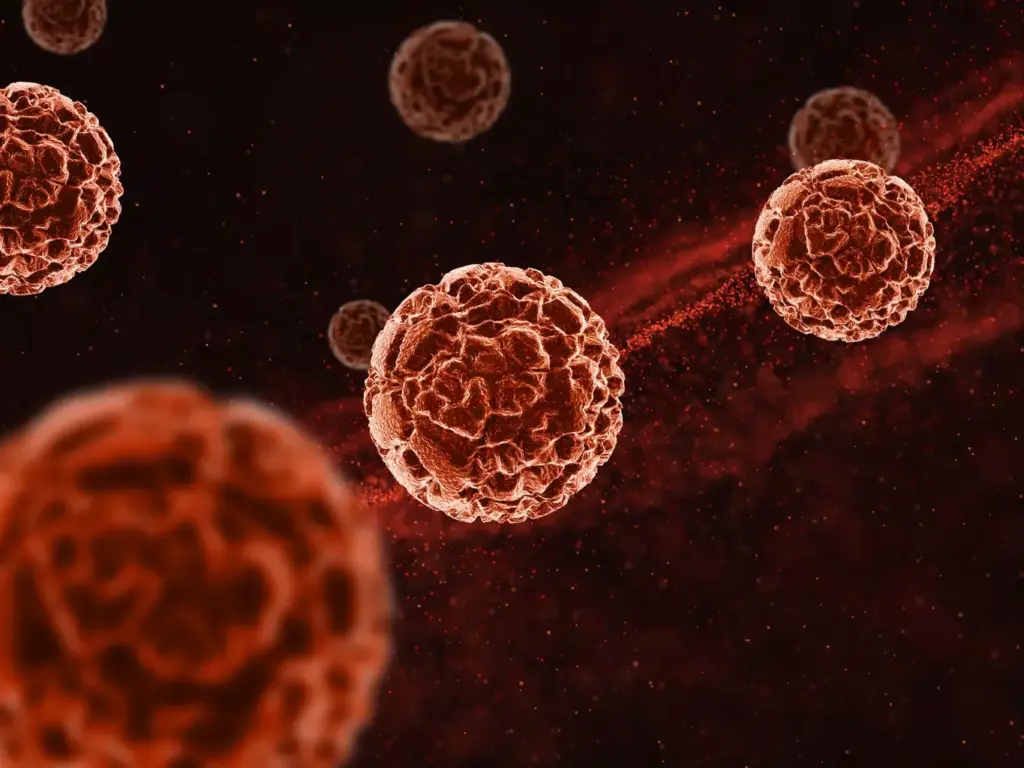Last Updated on November 26, 2025 by Bilal Hasdemir

At Liv Hospital, we aim to give top-notch healthcare and support to international patients. We know about over 100 cancer types. Each one is different based on the cells and tissues it comes from. It’s key to understand the many types of cancer.
We want to teach our patients about cancer types that start with ‘M’. We’ll cover 12 major types, including melanoma and mesothelioma. We’ll share important facts and how common each one is. This will help our patients understand and stay informed.
Key Takeaways
- There are many types of cancer, each with its own traits.
- Knowing about cancer and catching it early is very important.
- Liv Hospital is all about giving the best care and medical skills.
- Learning about the main cancer types helps patients make better choices.
- We will look at 12 major cancer types that start with ‘M’.
The Classification of Cancer Types
There are over 100 types of cancer. It’s important to classify them based on where they start in the body.
How the 100+ Cancer Types Are Categorized
Cancer classification is complex. It shows how different these diseases are. We sort cancer tumor types by their look, genetic changes, and where they grow.
Each type of cancer has its own kinds of cancer cells and where they come from. For example, carcinomas start in epithelial cells. Sarcomas start in connective tissue.
Many systems help classify tumors. The World Health Organization (WHO) system is one. It uses the tumor’s look and genetics to sort them.
The Importance of Cell and Tissue Origin
Knowing where a type of cancer starts is key. It helps doctors guess how it will act and how to treat it. This helps pick the best treatment.
Table: Examples of Cancer Classification Based on Cell and Tissue Origin
| Cancer Type | Cell/Tissue Origin | Examples |
|---|---|---|
| Carcinoma | Epithelial cells | Breast cancer, Lung cancer |
| Sarcoma | Connective tissue | Osteosarcoma, Leiomyosarcoma |
| Leukemia | Blood cells | Acute Lymphoblastic Leukemia (ALL) |
Recent studies show genetic changes are key in classifying cancer. Some cancers with certain genetic changes might do better with specific treatments.
Cancer That Starts With M: An Overview
Cancers starting with ‘M’ make up a big part of cancer cases worldwide. It’s important to know about them. We’ll look at different ‘M’ cancers, their unique traits, and why catching them early is key.
Prevalence and Impact of M-Named Cancers
There are many major ‘M’ cancers, like Melanoma, Mesothelioma, Multiple Myeloma, and Medulloblastoma. Melanoma is a serious skin cancer. It’s not the most common, but it causes most skin cancer deaths.
Recent data shows Melanoma is common in young adults, mainly those in their 20s.
| Cancer Type | Estimated New Cases | Estimated Deaths |
|---|---|---|
| Melanoma | 100,000+ | 7,000+ |
| Mesothelioma | 3,000+ | 2,500+ |
| Multiple Myeloma | 30,000+ | 12,000+ |
These numbers show how big of a deal ‘M’ cancers are for health. Knowing how common and deadly they are helps us find better treatments and care for patients.
Common Risk Factors and Warning Signs
Different ‘M’ cancers have different risk factors. For Melanoma, UV rays are a big risk. For Mesothelioma, it’s asbestos. Spotting signs early is vital.
Being aware of signs like skin changes, pain, or weight loss can lead to quick medical help.
“Early detection is key to improving survival rates for cancers starting with ‘M’. Awareness of risk factors and warning signs can significantly impact treatment outcomes.”
Knowing the risks and watching for signs can help catch ‘M’ cancers early. This can greatly improve survival chances and quality of life for those with these cancers.
Melanoma: The Most Dangerous Skin Cancer
Melanoma is the most aggressive skin cancer, causing many deaths worldwide. We will look at its types, stages, and why it’s so deadly.
Types and Stages of Melanoma
Melanoma has several types, with cutaneous melanoma being the most common. It affects the skin. Other types include ocular melanoma in the eyes and mucosal melanoma in mucous membranes. The stages of melanoma are important for treatment and survival chances. They range from Stage 0 to Stage IV, where cancer spreads to distant organs.
Why Melanoma Causes Most Skin Cancer Deaths
Even though it’s less common, melanoma causes most skin cancer deaths. Its aggressive nature and ability to spread make it deadly. Early detection is key to survival.
Knowing the risks, like too much UV exposure and genetics, helps prevent and detect melanoma early. Spotting warning signs and getting medical help quickly can save lives.
Mesothelioma: Asbestos-Linked Cancer
Mesothelioma is a rare and aggressive cancer linked to asbestos. It affects thousands worldwide each year. This cancer occurs in the thin tissue layer covering internal organs, like the lungs, abdomen, and heart.
Types of Mesothelioma and Their Locations
There are several types of mesothelioma, based on where the cancer is found:
- Pleural Mesothelioma: This is the most common type, affecting the lining surrounding the lungs (pleura).
- Peritoneal Mesothelioma: Occurs in the lining of the abdomen (peritoneum).
- Pericardial Mesothelioma: Affects the lining around the heart (pericardium).
- Testicular Mesothelioma: A rare form that affects the lining of the testicles.
Knowing the type of mesothelioma is key to finding the right treatment.
Diagnosis, Treatment, and Survival Rates
Diagnosing mesothelioma is hard because its symptoms are similar to other diseases. Doctors use X-rays, CT scans, MRIs, and biopsies to confirm cancer.
Treatment options depend on the stage and type of mesothelioma. They include:
- Surgery: To remove as much of the tumor as possible.
- Chemotherapy: To kill cancer cells.
- Radiation Therapy: To relieve symptoms and slow disease progression.
Survival rates for mesothelioma patients have improved. But, the prognosis is generally poor due to late diagnosis. The American Cancer Society says the 5-year survival rate is about 10%. Early detection and new treatments offer hope for some patients.
“The fight against mesothelioma requires a complete approach, including research into new treatments and support for those affected by this devastating disease.”
We are making progress in understanding and treating mesothelioma. We offer support and hope to those diagnosed with this challenging cancer.
Multiple Myeloma: Cancer of the Plasma Cells
Diagnosing and treating multiple myeloma has changed a lot. This brings new hope to those with this plasma cell cancer. It happens when bad plasma cells grow in the bone marrow, causing problems.
Symptoms and Diagnostic Approaches
Symptoms of multiple myeloma vary and can include bone pain, tiredness, and infections. To diagnose it, we use several tests:
- Blood tests to find abnormal proteins
- Bone marrow biopsy to look at plasma cells
- Imaging like X-rays, CT scans, or MRI to see bone damage
It’s important to catch it early for better treatment. We use these tests to confirm the disease, its stage, and how it affects the body.
Treatment Options and Recent Advances
Treatment for multiple myeloma has improved a lot. Now, we have options from old-school chemotherapy to new, targeted therapies. We have:
- Proteasome inhibitors to fight cancerous plasma cells
- Immunomodulatory drugs to boost the immune system
- Stem cell transplantation to replace bad bone marrow
- Monoclonal antibodies for targeted therapy
Recently, CAR-T cell therapy has emerged. It’s a new treatment that changes a patient’s T cells to attack myeloma cells. We’re always looking for new ways to treat multiple myeloma better.
By keeping up with these new treatments, we can give our patients the best care. This improves their life quality and chances of getting better.
Medulloblastoma and Other Brain Cancers Starting With M
Brain cancers starting with ‘M’ include medulloblastoma, meningioma, and medullary thyroid cancer. Each has its own traits. We’ll look at their diagnosis, treatment, and challenges.
Medulloblastoma in Children and Adults
Medulloblastoma is a brain tumor that mainly hits kids but can also affect adults. It grows in the cerebellum or posterior fossa, key for balance. Early diagnosis is key for treatment success.
Symptoms like headaches, nausea, and coordination problems are common. Doctors use MRI and biopsy for diagnosis. Treatment mixes surgery, chemotherapy, and radiation.
Meningioma and Medullary Thyroid Cancer
Meningioma grows in the meninges, the brain and spinal cord’s protective layers. Most are benign but can cause health issues. Treatment varies by tumor size and location, from watching to surgery.
Medullary thyroid cancer starts in the thyroid gland. It can be random or linked to genetic syndromes. Surgery is often the first step, sometimes followed by radioactive iodine treatment.
| Cancer Type | Typical Age Group | Common Symptoms | Treatment Approaches |
|---|---|---|---|
| Medulloblastoma | Children | Headaches, nausea, coordination issues | Surgery, chemotherapy, radiation |
| Meningioma | Adults | Headaches, seizures, vision changes | Monitoring, surgery, radiation |
| Medullary Thyroid Cancer | Adults | Neck swelling, difficulty swallowing | Surgery, radioactive iodine |
Knowing about ‘M’ brain cancers is vital for good treatment plans. We’re always learning and improving, giving hope to patients and their families.
Malignant Peripheral Nerve Sheath Tumors
We look into the complex world of malignant peripheral nerve sheath tumors. These are rare and aggressive cancers. They grow from the sheath around nerves and are hard to diagnose and treat.
Connection to Neurofibromatosis
MPNSTs are closely linked to neurofibromatosis type 1 (NF1). NF1 is a genetic disorder that causes many neurofibromas. People with NF1 are more likely to get MPNSTs.
It’s important for NF1 patients to watch for any changes. Recent studies show the need to monitor NF1 patients for early signs of MPNSTs.
Key factors linking NF1 to MPNSTs include:
- Genetic predisposition
- Increased risk of tumor transformation
- Need for regular monitoring
Diagnosis and Treatment Approaches
Diagnosing MPNSTs is tough because they are rare and look like other soft tissue tumors. MRI and biopsy are key for accurate diagnosis. Treatment often includes surgery, radiation, and chemotherapy to control the tumor and manage spread.
Effective management of MPNSTs requires a multidisciplinary approach. This means working together with oncologists, surgeons, and other experts to create a treatment plan that fits each patient’s needs.
M-Type Lymphomas: Mantle Cell and Marginal Zone
Lymphomas are cancers that start in lymphocytes. Mantle cell and marginal zone lymphomas are two types that need special care. We’ll look at these M-type lymphomas, their traits, subtypes, and treatment options.
Mantle Cell Lymphoma Characteristics
Mantle cell lymphoma is a B-cell non-Hodgkin lymphoma. It affects the mantle zone of lymph nodes. It’s aggressive and mostly found in older adults. Doctors use tests like imaging and tissue exams to diagnose it.
Symptoms include swollen lymph nodes, spleen, fever, and weight loss. Today, treatments include targeted and immunotherapies, along with traditional methods.
Marginal Zone Lymphoma Subtypes
Marginal zone lymphoma comes from the marginal zone of lymphoid tissues. It’s split into three types: MALT lymphoma, nodal marginal zone lymphoma, and splenic marginal zone lymphoma.
Each type has its own symptoms and treatment plans. For example, MALT lymphoma might need antibiotics if caused by Helicobacter pylori. But nodal and splenic types might need stronger treatments like chemotherapy and rituximab.
“The diversity in marginal zone lymphoma subtypes necessitates a tailored approach to diagnosis and treatment, highlighting the importance of precise pathological classification.”
Knowing the details of M-type lymphomas is key to good treatment. We’re working hard to improve diagnosis and treatment. This gives patients hope for better outcomes.
Additional Cancers Beginning With M
There are many cancers starting with ‘M’ that affect people worldwide. These cancers have different types and challenges. We will look at mouth cancer, myelodysplastic syndromes, Merkel cell carcinoma, and mucosal melanoma. We’ll talk about their symptoms, how to diagnose them, and treatment options.
Mouth Cancer (Oral Cavity Cancer)
Mouth cancer affects the lips, tongue, and other parts of the mouth. Risk factors include tobacco use, heavy alcohol consumption, and human papillomavirus (HPV) infection. Symptoms include mouth sores, lumps, and trouble swallowing. Treatment usually involves surgery or radiation therapy.
For more information on common cancers, you can visit Liv Hospital’s page on the most common diseases in.
Myelodysplastic Syndromes
Myelodysplastic syndromes (MDS) are disorders that affect blood cells. They can lead to acute myeloid leukemia (AML). Symptoms include fatigue, shortness of breath, and increased risk of infections. Treatment options include supportive care and stem cell transplantation.
- Blood transfusions to manage anemia
- Medications to stimulate blood cell production
- Immunosuppressive therapy in some cases
Merkel Cell Carcinoma
Merkel cell carcinoma is a rare and aggressive skin cancer. It appears as a firm, painless nodule or bump on the skin. Risk factors include UV exposure, age, and immunosuppression. Treatment involves surgery, radiation therapy, and sometimes chemotherapy.
Mucosal Melanoma
Mucosal melanoma is a rare melanoma that occurs in mucous membranes. Symptoms can be nonspecific, making early diagnosis challenging. Treatment usually includes surgery, radiation therapy, or immunotherapy.
Understanding these cancers starting with ‘M’ is key for early detection and treatment. Each cancer has its own challenges and needs a specific approach to care.
Conclusion: Advances in Treating M-Type Cancers
There have been big steps forward in treating cancers that start with ‘M’, like melanoma, mesothelioma, and multiple myeloma. More research has helped us understand these cancers better. This has led to new treatments like targeted therapies and immunotherapies.
Thanks to new discoveries, we can now treat these cancers more effectively. For example, checkpoint inhibitors have changed how we treat melanoma. Also, new treatments for multiple myeloma have made a big difference.
It’s important to keep researching and spreading the word about these cancers. Finding cancer early is key to better outcomes. We need to support research and teach people about the risks and signs of these cancers.
By working together, we can give patients the best care possible. This means better lives and longer survival rates. The progress in treating m-type cancers shows we’re making a difference. We’re committed to finding even more ways to fight cancer.
FAQ
What are the main types of cancer that start with the letter M?
The main types of cancer starting with M include melanoma and mesothelioma. Also, multiple myeloma, medulloblastoma, and malignant peripheral nerve sheath tumors. There’s also mantle cell lymphoma, marginal zone lymphoma, and mouth cancer. Myelodysplastic syndromes, Merkel cell carcinoma, and mucosal melanoma are others.
How are the different types of cancer categorized?
Cancers are grouped based on where they start in the body. Knowing this helps doctors diagnose and treat them better.
What is the significance of understanding the cell and tissue origin of cancer?
Knowing where cancer starts is key to treating it right. Each cancer type has its own traits. This helps doctors pick the best treatment.
What are the common risk factors for cancers starting with M?
Risk factors vary for each M-type cancer. For example, asbestos can cause mesothelioma. UV rays increase melanoma risk. Genetic factors play a role in multiple myeloma.
How can one detect cancers starting with M early?
Spotting M-type cancers early means knowing the signs and risks. Regular health checks and screenings are important. For instance, skin exams can catch melanoma early.
What is the prognosis for patients with mesothelioma?
Mesothelioma’s outlook depends on the cancer’s stage and where it is. It’s tough to treat, but early action can help.
Are there any recent advances in treating multiple myeloma?
Yes, treating multiple myeloma has improved a lot. New drugs and treatments have better results for patients.
What is the connection between neurofibromatosis and malignant peripheral nerve sheath tumors?
Neurofibromatosis increases the risk of malignant peripheral nerve sheath tumors. These tumors are linked to this genetic disorder.
How are M-type lymphomas, such as mantle cell lymphoma and marginal zone lymphoma, treated?
Treatment for M-type lymphomas varies by type and stage. It might include chemotherapy, targeted therapy, or immunotherapy.
What are the characteristics of Merkel cell carcinoma?
Merkel cell carcinoma is a fast-growing, aggressive skin cancer. It’s more common in older people and those with weak immune systems.
How many kinds of cancer are there, and how many start with the letter M?
Over 100 types of cancer exist, with 12 major ones starting with M. Our overview covers these.
References
- Cancer Research UK. (n.d.). Your cancer type. Retrieved from https://www.cancerresearchuk.org/about-cancer/type/ Cancer Research UK
- WebMD. (n.d.). Cancer A to Z: Types of cancer. Retrieved from https://www.webmd.com/cancer/cancer-a-to-z WebMD
- MD Anderson Cancer Center. (n.d.). Cancer types. Retrieved from https://www.mdanderson.org/patients-family/diagnosis-treatment/cancer-types.html MD Anderson Cancer Center
- University of Texas Health Science Center at San Antonio (UTHSCSA). (n.d.). Cancer care: Conditions treated. Retrieved from https://cancer.uthscsa.edu/cancer-care/conditions
- ICR Partnership. (n.d.). Cancer type list. Retrieved from https://www.icrpartnership.org/cancer-type-list








